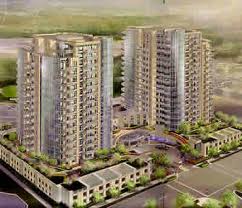Think your opinion matters? Apparently not to our City Council. A majority of council members voted at an Ordinance Committee meeting to move along MIT’s upzoning petition before the public had a chance to speak its mind. Arguably, it was to allow our mayor, who had another engagement, to record her vote in favor of the petition. But in reality, you couldn’t fabricate a better example to illustrate what the council feels about your opinion or how they’re responding to the over-heating pressures for development in our city.
Put simply, they appear eager to ride the rising tide of development with little concern for those of us who may get flooded out. With little concern for the diversity we’ll lose as they vote to bring in wave after wave of affluent renters. Or for families that get squeezed out by the higher neighborhood rents that accompany new market-rate housing. Or for neighborhoods that will suddenly have 14 or 16 story towers reaching into their sky, and thousands more cars clogging their streets.
The sellers of “progress” tell us this is the price we have to pay to get more housing and create a better Cambridge. Housing has become the shield behind which developers and business interests now hide their self-enrichment and self-interest. If you could prove what I postulated in the previous paragraph, that new market-rate housing chases out more families than it makes room for, and erodes diversity, they would still argue that inclusionary housing forgives all sins. And that providing 11-15% low or mid-level affordable housing in a housing development makes up for whatever loss of low- or middle-income residents it eventually chases out of the city.
Now, as the City Council pretends to effectively review a proposal that will add 2.1 million square feet of office, lab and residential space to a city already densely populated and excessively traveled by car, someone needs to shout “STOP!” Someone needs to exhort them, “Don’t agree to anything until you understand we’re facing a tsunami of development over the course of the next 20 years. Don’t agree to anything until you learn and study the consequences we face from projections that predict over 18 million square feet of new offices, labs and residences in the city. Which, according to Cambridge’s own published numbers, breaks down to over 50,000 new car trips daily, plus a similar number of additional commuter trips.
Forget the fact that MIT wants to build a skyscraper in our city, a 300 foot demonstration of their importance. Perhaps an easy way for pro-development votes on the Council to create a precedent for buildings significantly higher than our zoning has allowed to date. Forget the fact that MIT fails to address the problem of its grad student housing shortages, which seriously impacts the availability of affordable housing in Cambridge. Forget the fact that MIT operates like it can get what it wants just because it wants it.
Why would our City Council agree to such massive upzoning when they cannot imagine the consequences of such a decision? Nor can they understand the context of over-development in which they’ll be making their decision. Denise Simmons has commented on the fact that listening to presentations, citizen opinions and opposing viewpoints in a single evening doesn’t lend itself well to making informed decisions.
With the massive impacts that come with massive upzoning petitions, the City Council, as the stewards charged with protecting and guiding our city, need to do their homework. They need to find out how many thousands of car trips and transit trips this level of development would bring? They need to know how many millions of square feet of development the City is facing down the road, so we can sensibly prepare for whatever is coming.
To vote on the MIT petition, or the K2C2 recommendations without looking seriously at the future is like continuing to set the table for dinner even though your senses tell you the house is on fire.
It’s time to stop and think; to slow the rush to development and to rethink dotting the landscape with towers. It’s time to stop and study the future, before we rush headlong into it.
It’s time to say no to mindless development.
Then let’s see what develops.



